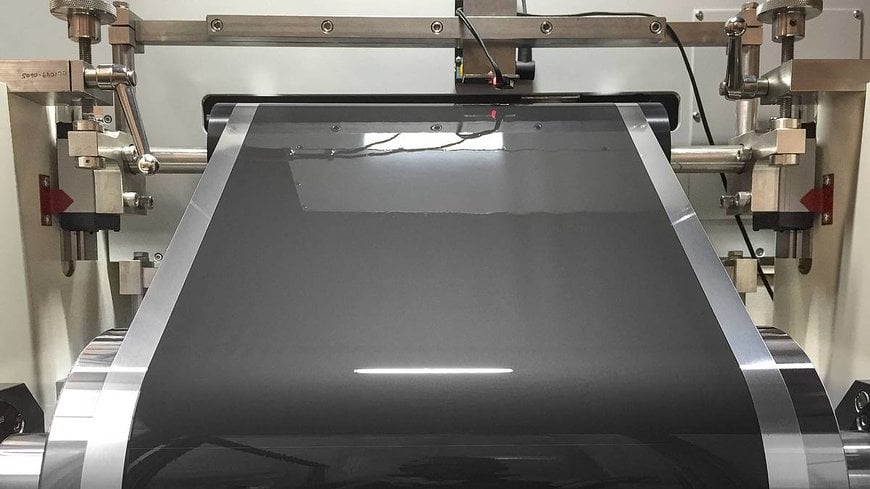How electromobility will influence the production facilities of the future
What vehicle production for tomorrow's mobility should look like is a matter of concern for automobile manufacturers worldwide.

How electromobility will influence the production facilities of the future.
At this year's Battery Tech in Los Angeles, Andreas Hohmann and Cornelius von Podewils from Dürr Consulting gave an insight into the topics of e-mobility, new technologies in battery production and what demands will be placed on future production facilities from the aspect of digitalization.
To what extent will future mobility concepts and vehicle characteristics change or influence existing and future production facilities and the global production network? This was the question that the two Dürr consultants Hohmann and von Podewils investigated at Battery Tech 2020. The two speakers first explained which global megatrends will have an influence on future production facilities.
Global Megatrends
The global megatrends are understood to be the diverse requirements arising from new technologies, changed mobility and, for example, new infrastructures. Five main strategies are being pursued by the leading OEMs:
- New mobility solutions
- Autonomous and connected driving
- Sustainability
- Scalability and flexibility
- E-mobility
A flexible production network is needed to meet these global megatrends. It is important that a globally active company acts at the right time. Emotional and individual products, as they are increasingly demanded, must be brought to market quickly and efficiently. This requires flexible, versatile and interchangeable production systems.
Ready for the transformation?
In order to remain competitive and flexible, future demands on manufacturing processes must be integrated into existing systems today. What does flexibility mean? Hohmann mentions five points as an answer to this question:
- Scalability
- Compatibility
- Modularity
- Universality
- Mobility
These aspects must be individually adapted to the requirements of the respective manufacturer. Since few new production facilities are being built in Europe, such a flexible production solution is usually implemented as a brownfield integration.

A successful transformation of automobile production to electromobility depends on the building structure of the production facility, smart production equipment and the integration of new logistical processes.
Electric car as the vehicle of the future
There are various arguments in favour of considering the electric car as the vehicle of the future. These include legal requirements and the associated subsidies. But a changing infrastructure also plays a major role. In order to achieve ecological goals – especially in increasingly large conurbations – e-mobility is needed. The example of China shows that start ups make it possible to develop electric vehicles quickly and cheaply and to bring them to market at an affordable price.
80 to 120 new battery factories worldwide by 2030
For the transition to e-mobility to succeed, it is estimated that 80 to 120 new battery factories will be built by 2030. Each of them will need equipment to produce battery cells, battery modules or entire battery packs. "This is why we at Dürr are developing a product portfolio for specific process steps within the e-mobility value chain," says von Podewils. Digitization also plays a major role in this. At Dürr there are about 100 software developers working on optimizing so-called overall equipment effectiveness (OEE). Dürr is already using analysis tools from the DXQanalyze product family for customers, which sustainably optimize the reduction of reject rates, the amount of rework required and the simultaneous reduction of downtime.
One example of a sub-process in battery manufacturing that is part of the Dürr portfolio is the coating process. In this process the anodes and cathodes are produced in coating systems. Their quality has an enormous influence on the performance of the battery cells, especially in terms of charging, service life and safety. A mixture of active material and binder is applied to both sides of a thin aluminum and copper foil. The solvent used is recovered and can be reused after distillation to more than 95 percent. The simultaneous coating process saves time and has qualitative advantages over other methods. Deformations that occur during one-sided drying do not occur during simultaneous drying of both sides. With current coating lines from Dürr, a very good throughput rate of 40 meters per minute is achieved. Through continuous further development, the double rate could soon be realized. In order to further improve the sustainability of machines and systems, Dürr is working on new technologies that reduce the energy consumption of the plants. "The potential for reducing energy consumption is high," emphasizes von Podewils.
Key trends in battery production
"The automotive sector should now be ready for the changeover to electric vehicles and invest in innovations," Andreas Hohmann noted. He currently sees the following trends in battery production:
- The number of battery modules is reduced, the modules become larger and heavier
- Automation and manual areas are separated
- Automated and manual stations are modularly designed
- Automated stations are increasingly arranged in parallel instead of sequentially to achieve higher availability
- Transport concepts are optimized, e.g. with Automated Guided Vehicles (AGVs)

In the manufacturing process of batteries, the coating of the electrodes influences the performance of the battery cells immensely. Dürr's simultaneous coating on both sides saves time and brings qualitative advantages.
In order to be able to implement the diverse requirements for the production of the vehicles of the future in a targeted manner, many manufacturers wish for a tailor-made production concept. Dürr is supporting the transformation in the mobility industry and is developing individual manufacturing solutions together with and for its customers with the emphasis on efficiency and sustainability.
www.durr.com

